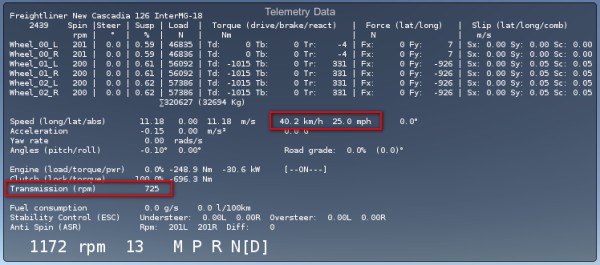The retarder brake sits between the gearbox output and the driveline input. This means that the rpm the retarder "sees" is the rpm of the wheels after passing through the driveline. In your configuration that is:
rpm at the retarder = average rpm at the wheels * 3.7 * 1 * 1
or
rpm at the retarder = speed / wheel radius * 3.7 * 1 * 1 * 60 / (2*Pi)
The rpm at the retarder is also exposed in the Telemetry as "Transmission (rpm)". This is also the rpm at the output of the gearbox:

In your Retarder configuration, the problem are not the torque values but the RPM values. In this telemetry pic you can see that at 40 km/h (25 mph) the rpm at the transmission is 725. The differential gear ratio in this vehicle is 3.6, very close to yours. If we want the retarder to apply the maximum brake torque at 40 km/h and above, then the rpm values in this retarder should be 725.